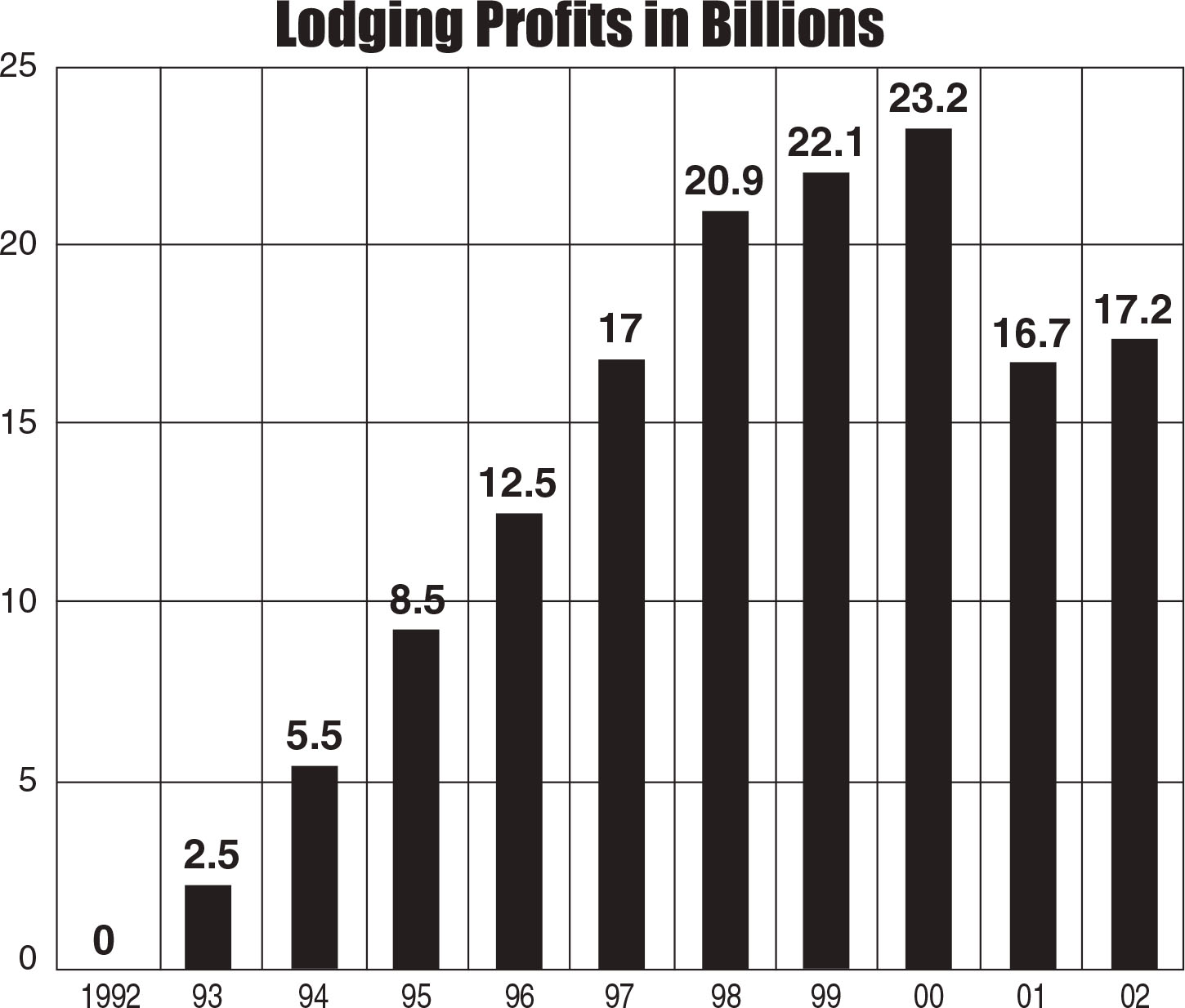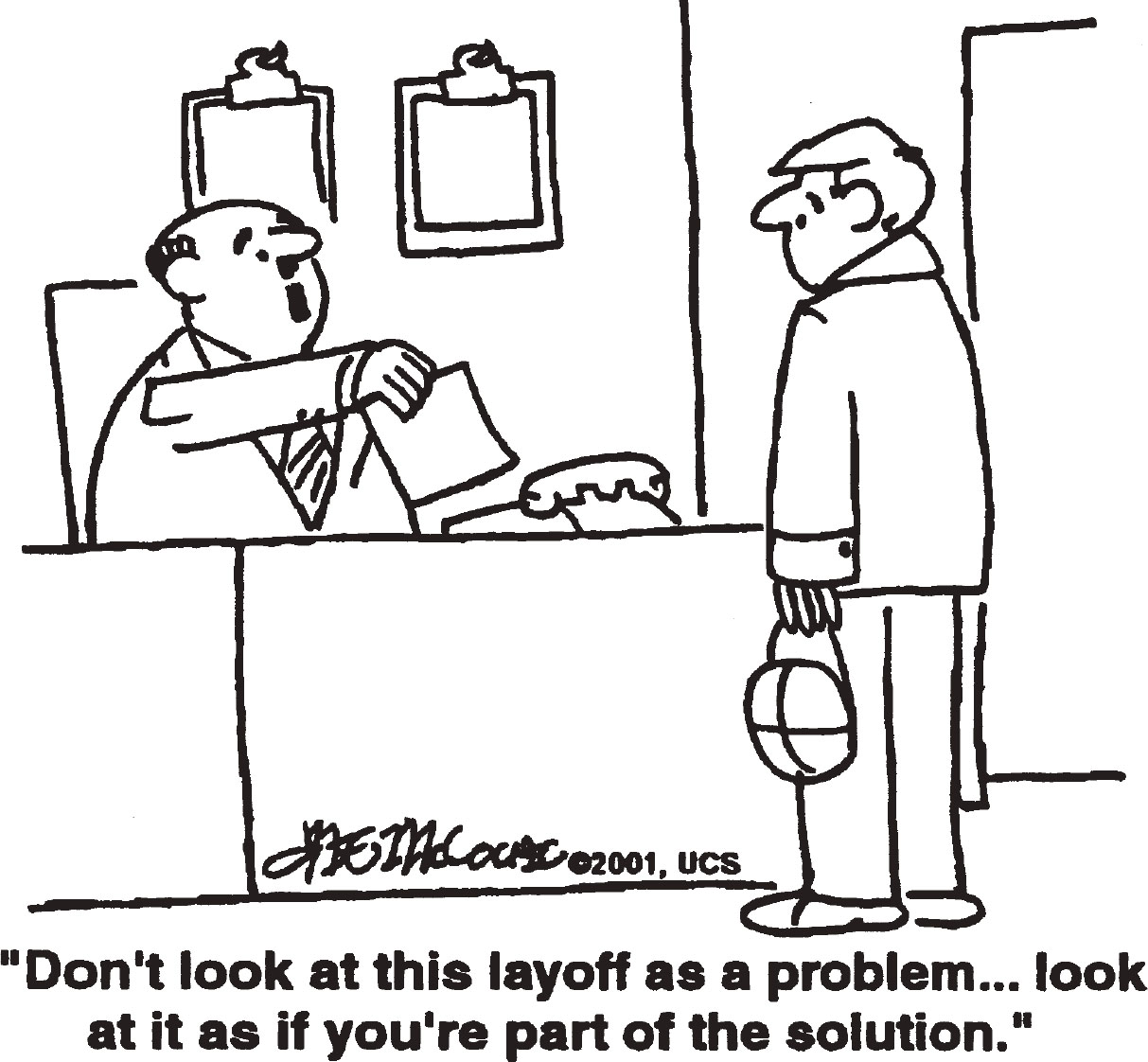Hotel operators maintained a healthy profit margin of 16 percent in 2001, despite a downturn in the economy in the first half of 2001 and the impact of the terrorist attacks on travel after September 11. Pre-tax profits for the industry was $16.7 billion on revenues of $108.7 billion.

Profits are expected to increase to $17.2 billion in 2002 and reach $19.8 billion in 2003, provided consumer and business confidence is not further eroded by escalating a conflict with Iraq.
In its annual research of hotel operations across the country, PricewaterhouseCoopers found hotels used 11 different methods to cut costs and maintain profits. Unfortunately for workers, most of these cost cutting measures put the burden on them. Hotels saved money by: eliminating jobs; cutting or deferring wages and bonuses; reducing work opportunity by closing or limiting hours of restaurants and outlets; changing food service to buffets or limited menus; reducing services such as room service and health spas; postponing worker training; and combining jobs and expecting workers to do both jobs.
A few cost cutting measures did not directly affect workers. These included: reducing expenses on advertising; postponing renovations and maintenance; reducing room amenities such as free bottled water and designer soaps; and reducing decorations such as lobby flowers, candles in restaurants, and linens for some meal periods. Hotels also took advantage of historically low interest rates to refinance loans.
Many hotels started these cost cutting measures at the end of 2000 and in early 2001, as the economy began slowing and businesses cut back on corporate travel. This allowed the industry to make a healthy 16 percent profit despite the disruption and slowdown of travel after September 11.
The chart below shows how 10 years of profitable operations pulled the lodging industry from losses of $5.7 billion in 1990 to record high profits of $23.1 billion in 2000.
Hotel giants layoff thousands
From the year 2000 to 2001, the three largest hotel chains—Marriott International, Hilton Hotels, and Starwood Hotels and Resorts— trimmed their workforce by 8.4 percent or some 30,000 employees. Marriott International operates or franchises 2,398 properties with 435,983 rooms, including hotel brands like the Renaissance and Ritz-Carlton Hotels. Hilton Hotels Corporation owns, manages, or leases 1,986 properties with 327,000 rooms. The Hilton brand includes Doubletree, Embassy Suites, Hampton, and Conrad and Harrison Conference Centers.
Starwood Hotels and Resorts owns, manages, or leases 743 hotels with 224,000 rooms, including the Sheraton and Westin Hotel chains. Together, the three hotel giants operate, manage, or franchise 5,127 properties around the world with close to one million rooms (986,983). Worldwide, they employed a total of 359,000 workers at the end of the year 2000, which was the year the lodging industry posted record profits of $23.2 billion and eightyears of steadily increasing profits. One year later, the three hotel chains reported employing 329,000 workers—or 30,000 workers less.


